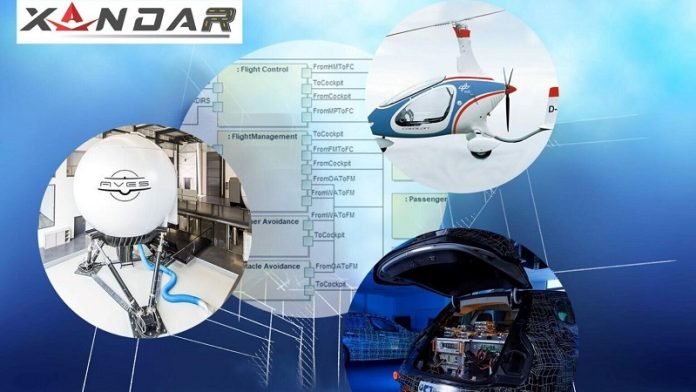
In an exciting leap forward for the future of travel, a team of European innovators has crafted a groundbreaking tool that could transform how we get around.
From self-driving cars navigating city streets to autonomous air taxis soaring through the skies, the journey toward advanced mobility systems is picking up speed, thanks to the collaborative efforts of the XANDAR project led by the Karlsruhe Institute of Technology (KIT).
At the heart of this technological evolution are the complex electronic brains that power these futuristic vehicles.
These systems need to process vast amounts of data quickly, securely, and reliably, whether it’s for making split-second decisions on the road or helping pilots avoid mid-air collisions.
Recognizing the challenges in developing such sophisticated software, the XANDAR team set out to streamline the entire process.
Their solution?
An automated “toolchain” – a smart assembly line of software tools designed to build other software.
This isn’t just any toolchain, though. It’s built to handle the demands of real-time operations and iron-clad security, crucial for ensuring that autonomous vehicles can safely and effectively navigate their environments without falling prey to cyber threats.
Imagine a world where cars and drones can see and understand their surroundings almost like humans do, using artificial intelligence to make sense of sensor data from around them. This is the vision that Professor Jürgen Becker and his team at KIT are bringing to life.
Their work focuses on making sure that as these vehicles become more integrated into our networks and lives, they remain secure and function as intended, without any unauthorized access or harmful glitches.
The secret sauce of the XANDAR project is its innovative approach to software development, known as X-by-Construction (XbC).
This method ensures that the software not only meets its design goals from the get-go but also adheres strictly to security and timing requirements. It’s like building a complex puzzle where each piece perfectly fits the first time, reducing the need for costly and time-consuming do-overs.
This new toolchain was put to the test by big names like the German Aerospace Center (DLR) and BMW Group, who applied it to create cutting-edge assistance systems for both the sky and the road.
Their success stories are a testament to the toolchain’s potential to reduce the risks and costs associated with developing the sophisticated software systems our future vehicles will rely on.
Beyond KIT, the project brought together a diverse team, including DLR, BMW, the University of Peloponnese, Queen’s University Belfast, and several tech companies, showcasing the power of collaboration in paving the way for safer, smarter, and more efficient mobility solutions.
As we stand on the brink of a new era in transportation, the XANDAR project offers a glimpse into a future where our journeys are not just imagined but realized through the magic of technology.



